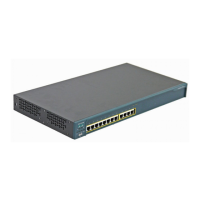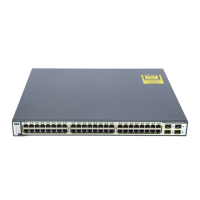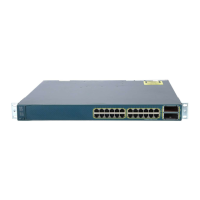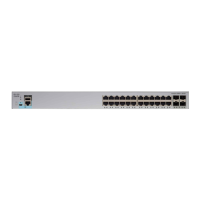52-3
Catalyst 6500 Series Switch Software Configuration Guide—Release 8.7
OL-8978-04
Chapter 52 Configuring QoS
Understanding How QoS Works
Note The Layer 3 IP packets can carry either an IP precedence value or a DSCP value. QoS
supports the use of either value, because DSCP values can be set equal to the IP precedence
values.
• Classification is the selection of traffic.
• Marking, according to RFC 2475, is the process of setting a Layer 3 DSCP value in a packet; in this
publication, the definition of marking is extended to include setting the Layer 2 CoS values.
• Scheduling is the assignment of traffic to a queue. QoS assigns the traffic that is based on the CoS
values.
• Congestion avoidance is the process by which QoS reserves the ingress and egress port capacity for
the traffic with the high-priority CoS values. QoS implements congestion avoidance with the
CoS value-based drop thresholds. A drop threshold is the percentage of buffer utilization at which
the traffic with a specified CoS value is dropped, leaving the buffer available for the traffic with the
higher-priority CoS values.
• Policing is the process by which the switch limits the bandwidth that is consumed by a flow of
traffic. Policing can mark or drop traffic.
• Except where specifically differentiated, the Layer 3 switching engine refers to either of the
following:
–
Supervisor Engine 2 with Layer 3 Switching Engine II (Policy Feature Card 2 or PFC2)
–
Supervisor Engine 1 with Layer 3 Switching Engine WS-F6K-PFC (Policy Feature Card
or PFC)
• Random early detection (RED) is a drop threshold algorithm.
• Shaped round robin (SRR) is a dequeuing algorithm.
• Weighted random early detection (WRED) is a drop threshold algorithm.
• Weighted round robin (WRR) is a dequeuing algorithm.
• Deficit weighted round robin (DWRR) is a dequeuing algorithm.
Flowcharts
Figure 52-1 shows how traffic flows through the QoS features; Figure 52-2 through Figure 52-9 show
more details of the traffic flow through QoS features.
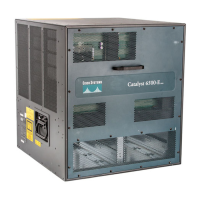
